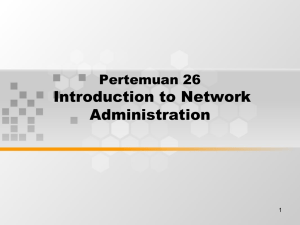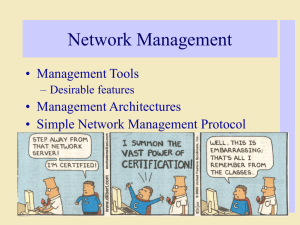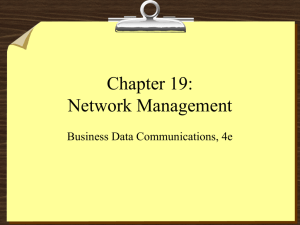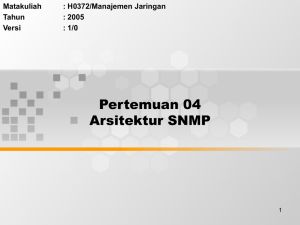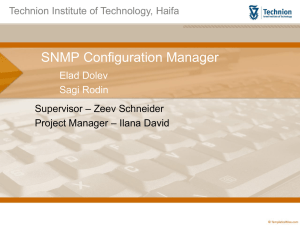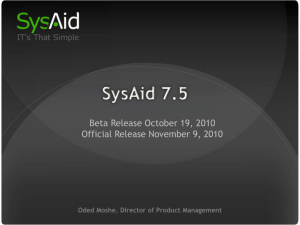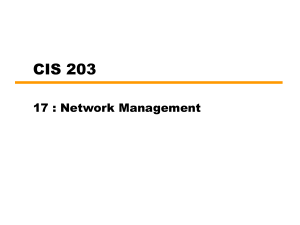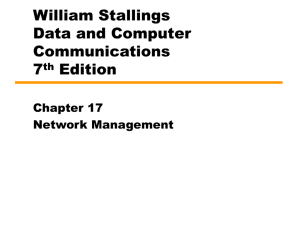Module 6 - IT, Sligo
advertisement
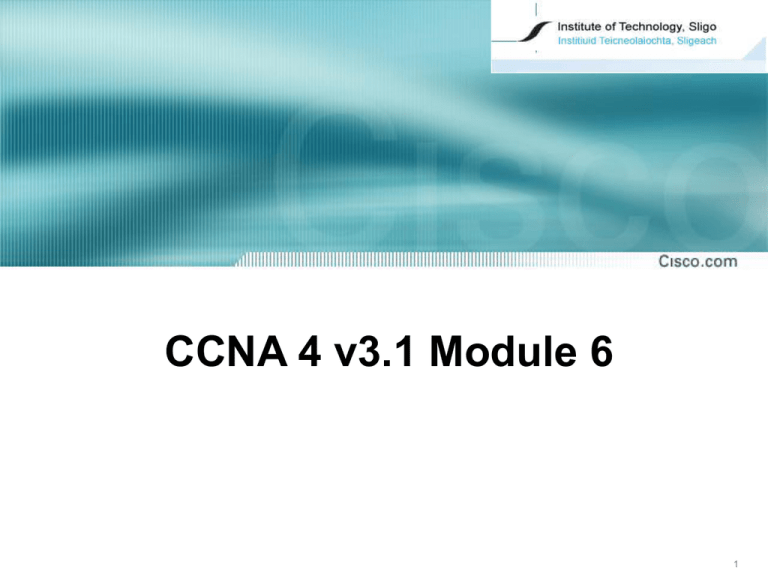
CCNA 4 v3.1 Module 6 1 CCNA 4 v3.0 Module 6 Introduction to Network Administration 2 Purpose of This PowerPoint • This PowerPoint primarily consists of the Target Indicators (TIs) of this module in CCNA version 3.0. • It was created to give instructors a PowerPoint to take and modify as their own. • This PowerPoint is: NOT a study guide for the module final assessment. NOT a study guide for the CCNA certification exam. • Please report any mistakes you find in this PowerPoint by using the Academy Connection Help link. 3 To Locate Instructional Resource Materials on Academy Connection: • Go to the Community FTP Center to locate materials created by the instructor community • Go to the Tools section • Go to the Alpha Preview section • Go to the Community link under Resources • See the resources available on the Class home page for classes you are offering • Search http://www.cisco.com • Contact your parent academy! 4 Objectives • Workstations and servers • Network management 5 Workstations 6 Workstations A workstation is a client computer that is used to run applications and is connected to a server from which it obtains data shared with other computers. 7 Servers: Connecting Computer Systems 8 Network Server Environment 9 Client/Server Environment 10 Server Farm 11 Client-Server Interaction 12 Network Operating Systems 13 Windows OS 14 UNIX Types Popular versions of Linux include the following: Red Hat Linux OpenLinux Corel Linux Slackware Debian GNU/Linux SuSE Linux 15 Apple 16 Service Applications and Protocols 17 TCP/IP Based Services 18 Evolution of Network Management 19 Network Management Requirements 20 Network Management Model 21 SNMP and CMIP Standards 22 Components of the Organization Model The network management station (NMS) is usually a standalone workstation, but it may be implemented over several systems. 23 Centralized Network Management Architecture 24 Hierarchical Network Management Architecture 25 Distributed Network Management Architecture 26 Management Information Bases 27 Object Identifiers 28 SNMP Protocol: Understanding the Agent 29 SNMP Protocol: Understanding the Protocol 30 SNMP Protocol: Understanding the Management Entity 31 SNMP Protocol: Understanding Community Strings 32 Management Protocols and Features 33 Configuring SNMP 34 RMON 35 RMON MIB 36 The Syslog Facility 37
